Nida Itrat Abbasi
Critical Insights about Robots for Mental Wellbeing
Jun 16, 2025Abstract:Social robots are increasingly being explored as tools to support emotional wellbeing, particularly in non-clinical settings. Drawing on a range of empirical studies and practical deployments, this paper outlines six key insights that highlight both the opportunities and challenges in using robots to promote mental wellbeing. These include (1) the lack of a single, objective measure of wellbeing, (2) the fact that robots don't need to act as companions to be effective, (3) the growing potential of virtual interactions, (4) the importance of involving clinicians in the design process, (5) the difference between one-off and long-term interactions, and (6) the idea that adaptation and personalization are not always necessary for positive outcomes. Rather than positioning robots as replacements for human therapists, we argue that they are best understood as supportive tools that must be designed with care, grounded in evidence, and shaped by ethical and psychological considerations. Our aim is to inform future research and guide responsible, effective use of robots in mental health and wellbeing contexts.
Robot-Led Vision Language Model Wellbeing Assessment of Children
Apr 03, 2025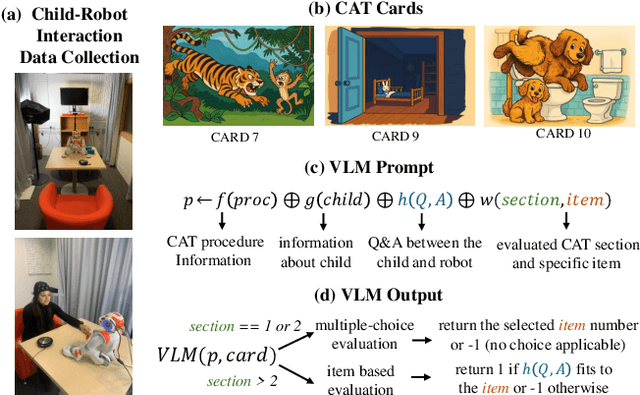

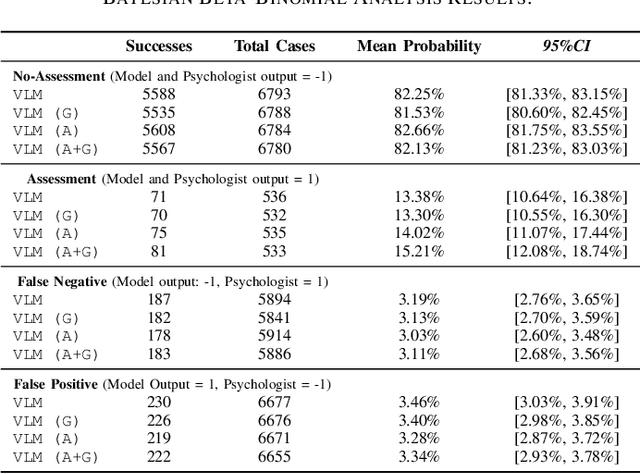
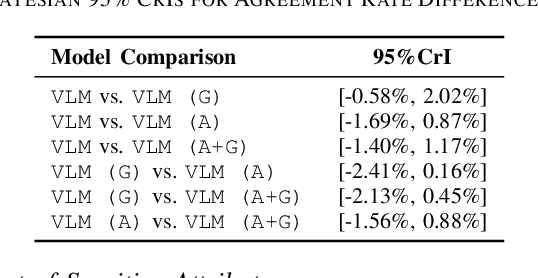
Abstract:This study presents a novel robot-led approach to assessing children's mental wellbeing using a Vision Language Model (VLM). Inspired by the Child Apperception Test (CAT), the social robot NAO presented children with pictorial stimuli to elicit their verbal narratives of the images, which were then evaluated by a VLM in accordance with CAT assessment guidelines. The VLM's assessments were systematically compared to those provided by a trained psychologist. The results reveal that while the VLM demonstrates moderate reliability in identifying cases with no wellbeing concerns, its ability to accurately classify assessments with clinical concern remains limited. Moreover, although the model's performance was generally consistent when prompted with varying demographic factors such as age and gender, a significantly higher false positive rate was observed for girls, indicating potential sensitivity to gender attribute. These findings highlight both the promise and the challenges of integrating VLMs into robot-led assessments of children's wellbeing.
A Longitudinal Study of Child Wellbeing Assessment via Online Interactions with a Social Robots
Apr 16, 2024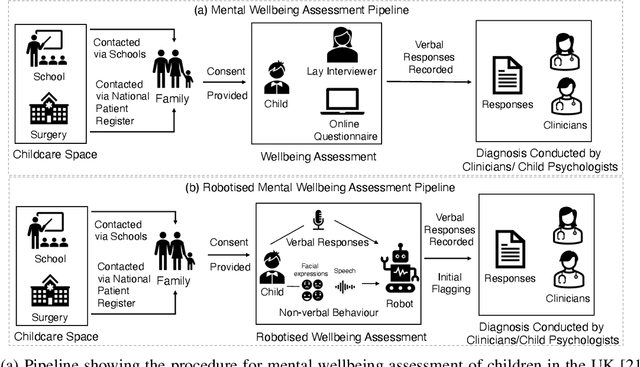
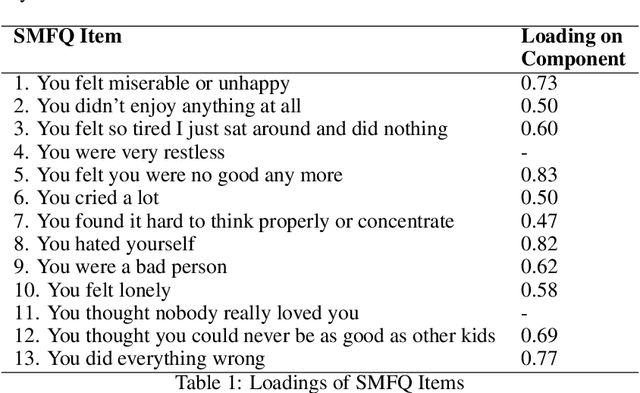
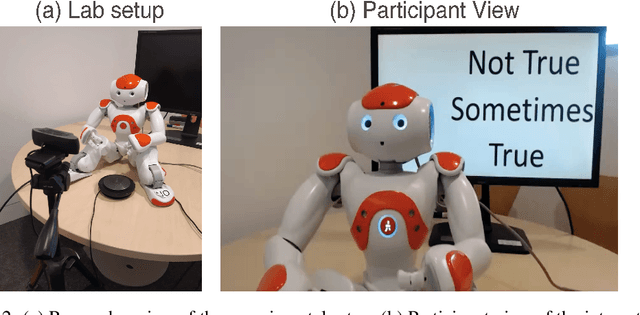
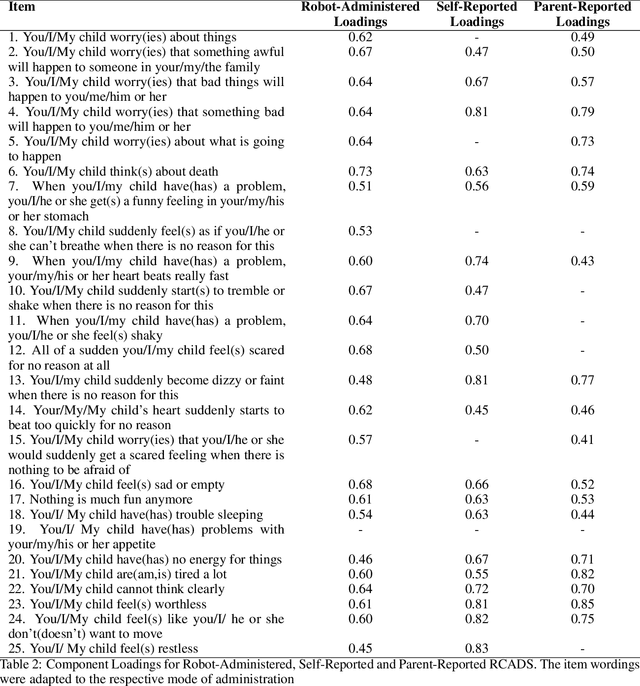
Abstract:Socially Assistive Robots are studied in different Child-Robot Interaction settings. However, logistical constraints limit accessibility, particularly affecting timely support for mental wellbeing. In this work, we have investigated whether online interactions with a robot can be used for the assessment of mental wellbeing in children. The children (N=40, 20 girls and 20 boys; 8-13 years) interacted with the Nao robot (30-45 mins) over three sessions, at least a week apart. Audio-visual recordings were collected throughout the sessions that concluded with the children answering user perception questionnaires pertaining to their anxiety towards the robot, and the robot's abilities. We divided the participants into three wellbeing clusters (low, med and high tertiles) using their responses to the Short Moods and Feelings Questionnaire (SMFQ) and further analysed how their wellbeing and their perceptions of the robot changed over the wellbeing tertiles, across sessions and across participants' gender. Our primary findings suggest that (I) online mediated-interactions with robots can be effective in assessing children's mental wellbeing over time, and (II) children's overall perception of the robot either improved or remained consistent across time. Supplementary exploratory analyses have also revealed that gender affected the children's wellbeing assessments as well as their perceptions of the robot.
Robotising Psychometrics: Validating Wellbeing Assessment Tools in Child-Robot Interactions
Feb 28, 2024Abstract:The interdisciplinary nature of Child-Robot Interaction (CRI) fosters incorporating measures and methodologies from many established domains. However, when employing CRI approaches to sensitive avenues of health and wellbeing, caution is critical in adapting metrics to retain their safety standards and ensure accurate utilisation. In this work, we conducted a secondary analysis to previous empirical work, investigating the reliability and construct validity of established psychological questionnaires such as the Short Moods and Feelings Questionnaire (SMFQ) and three subscales (generalised anxiety, panic and low mood) of the Revised Child Anxiety and Depression Scale (RCADS) within a CRI setting for the assessment of mental wellbeing. Through confirmatory principal component analysis, we have observed that these measures are reliable and valid in the context of CRI. Furthermore, our analysis revealed that scales communicated by a robot demonstrated a better fit than when self-reported, underscoring the efficiency and effectiveness of robot-mediated psychological assessments in these settings. Nevertheless, we have also observed variations in item contributions to the main factor, suggesting potential areas of examination and revision (e.g., relating to physiological changes, inactivity and cognitive demands) when used in CRI. Findings from this work highlight the importance of verifying the reliability and validity of standardised metrics and assessment tools when employed in CRI settings, thus, aiming to avoid any misinterpretations and misrepresentations.
A Systematic Review on Reproducibility in Child-Robot Interaction
Sep 04, 2023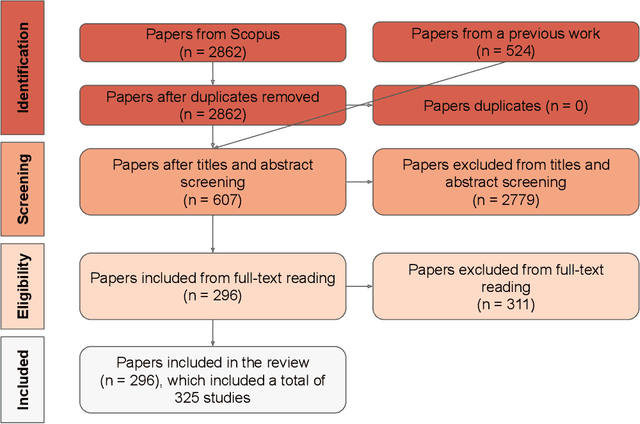
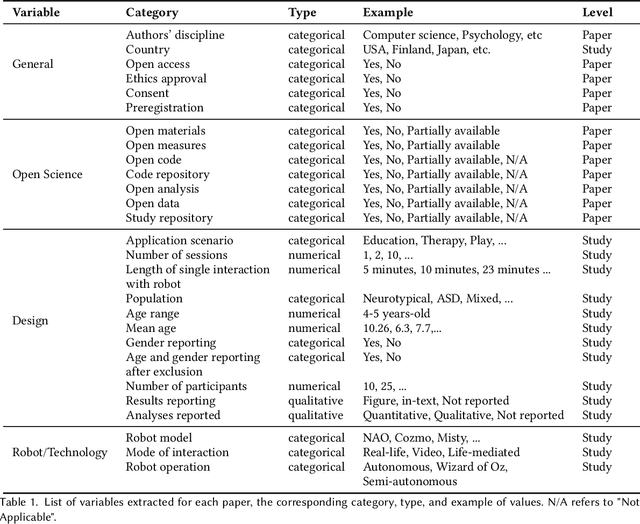
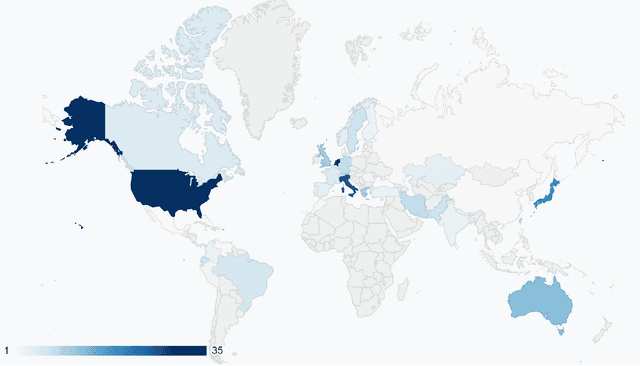
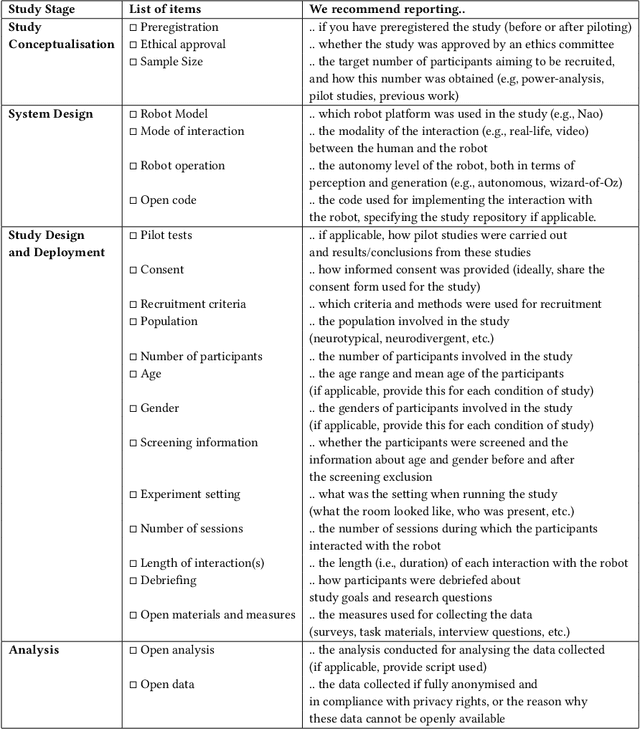
Abstract:Research reproducibility - i.e., rerunning analyses on original data to replicate the results - is paramount for guaranteeing scientific validity. However, reproducibility is often very challenging, especially in research fields where multi-disciplinary teams are involved, such as child-robot interaction (CRI). This paper presents a systematic review of the last three years (2020-2022) of research in CRI under the lens of reproducibility, by analysing the field for transparency in reporting. Across a total of 325 studies, we found deficiencies in reporting demographics (e.g. age of participants), study design and implementation (e.g. length of interactions), and open data (e.g. maintaining an active code repository). From this analysis, we distill a set of guidelines and provide a checklist to systematically report CRI studies to help and guide research to improve reproducibility in CRI and beyond.
 Add to Chrome
Add to Chrome Add to Firefox
Add to Firefox Add to Edge
Add to Edge